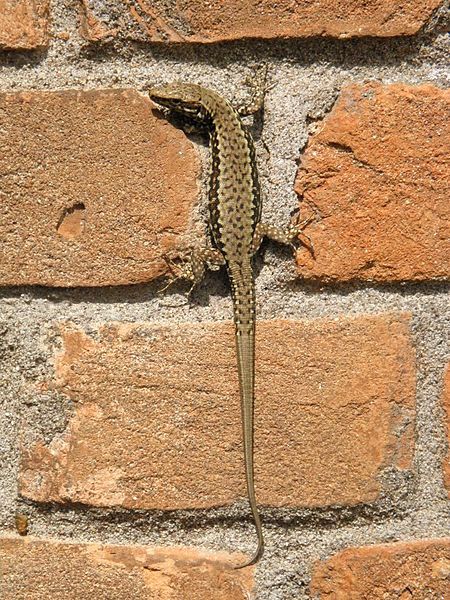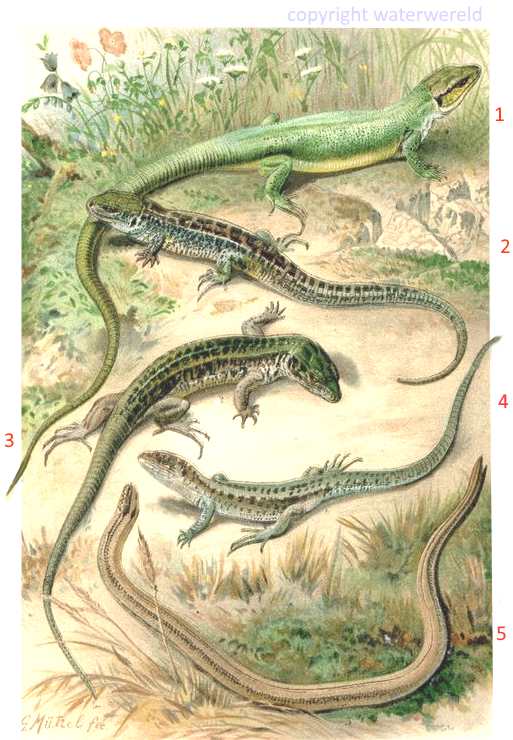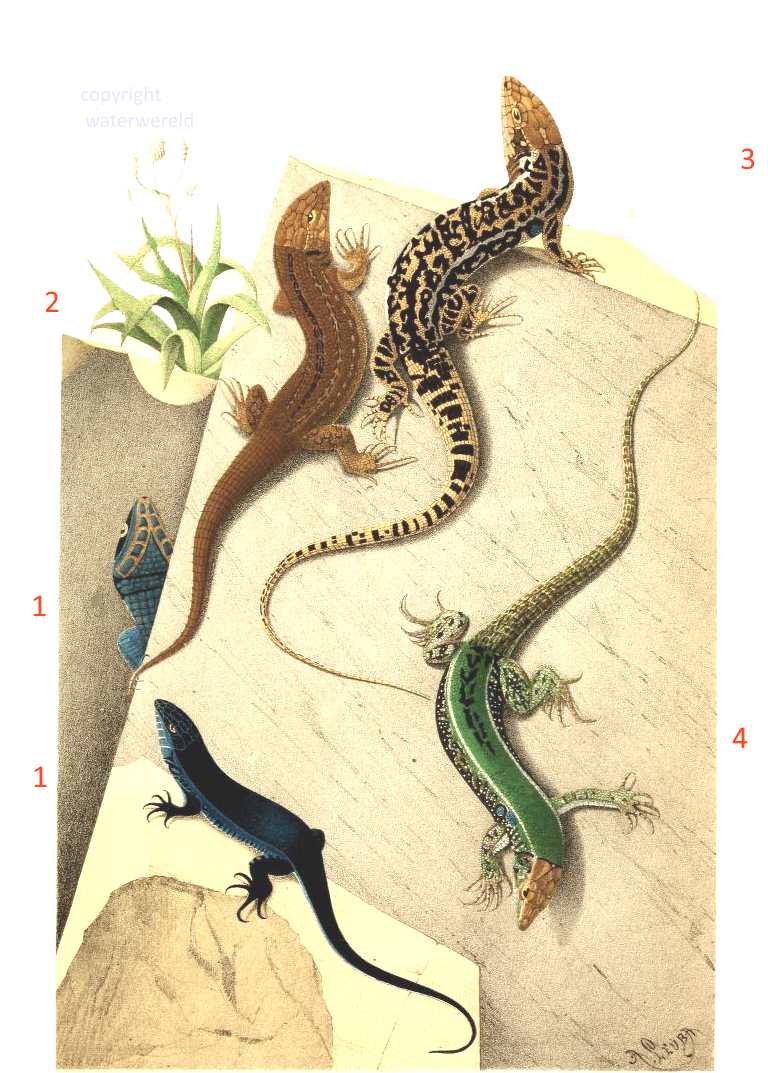The common wall lizard
This is an small lizard found in Central and South Europe that lives in crackels in walls, rocks and boulders. They live from insects ( mostly flies, gnats, midgets, moths) and slower food , like caterpillars and woodlice and spiders. For larger prey the lizard will thrashes its prey to death on the nearest rock and swallows them headfirst. (5)They can easely be seen, on wall, rock face, any stonework, piles of wood where it can bask in the sun. There sharp nails make is possible to climb every wall.

common wall lizard, sun basking
The common wall lizard in usa and britain
Due to climate change , but also with help of humans they have spread into great Britain and the USA, were it is technically a non-native species, having been introduced or escaped into the wild.In Britain they can be found in a number of sites in Southern England , especially along the cliffs of Dorset, and as far north as Sheffield.
In the Usa there are populations around Cincinnati using railroad lines as spontaneous expanding corridors. . There origin has started in Italy , and are by released by member(s) of the Lazarus family, a family well-known in Cincinnati somwere between the 1940s or 1950s. These are the “famous Lazarus lizards”. (4)

European Lizards (3)
1 the European green lizard or Lacerta viridis
2 the Sand Lizard or Lacerta agilis,
3 the Wall lizard or Podarcis muralis
4 the Common lizard or Lacerta vivipara
5 the slowworm or Anguis fragilis

The wall lizard shows a great diversity in appearance or , as it is called in biology, phenotype. On this old illustration (2) five morphs or forms or variatiobs are depicted:
1 var. lilfordi 2 var. serpa, near Capri 3 var. brueggemanni, near Genua 4 var. quadrilimeata, on Sardinia 5 var. bedriago, on Corsica
different morphs and wall lizard
There are six morphs of the wall lizard that can be easely distinguished from each other. The morphs not only differ in phenotype (appearance) but also in seize, and other features like : The chemical communication between the plays a key role in morph recognition and mate choice. Every morph uses a different amount of compounds (especially tocopherols and furanones) . This makes it possible to find a partner of the desired gender, age and morphs. (3)
Polymorphisme and the wall lizard
Polymorphisme is an adaptation to different niches (locations ) were the wall lizard lives. G. Evelyn Hutchinson, a founder of niche research, commented “It is very likely from an ecological point of view that all species, or at least all common species, consist of populations adapted to more than one niche”.
Wall lizard as a pet
The wall lizard is a popular pet that needs a large terrarium. If can be feed easely with mealworms, buffalo worms, and crickets. During summertime I’ll feed them with locally catched locust and other insects. But it is much easier to feed them a fruit fly automat. Remember that a wall-lizard never stops eating. They are quite shy and easy to keep but do not tolerate other lizards:
Wall lizard and the common and Italian lizard
The common wall lizard is agressive to the much larger common and Italian lizards. The Italian lizard occupies the same habitat: cracks in walls, but starts living in the grass when confronted with the wall lizard. The common lizard is driven away by the wall lizard.
reference
(1) 1903, “Brockhaus’ Lexikon”.
(2) Bulletin de la Société zoologique de France (Pl. IX) (6198087164)
(5) Guardian Paul Brown
